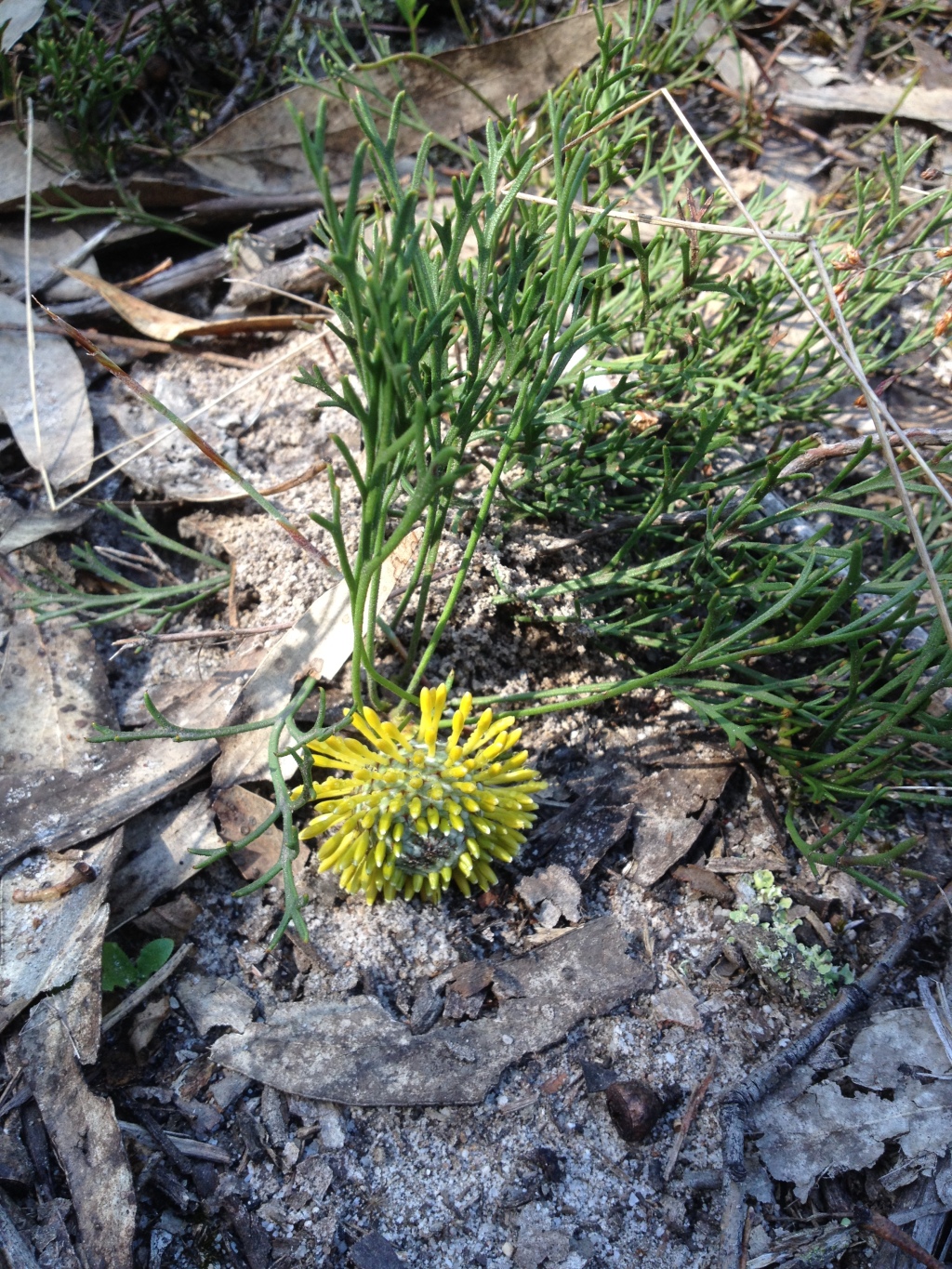Isopogon prostratus
McGill Prostrate Cone-bushProstrate, spreading shrub, to 1 m or more diam.; branchlets reddish, pubescent. Leaves variously divided into acute linear lobes, to c. 10.5 cm long overall, glabrous but minutely scabrous, flattened; petiole to c. 6 cm long. Inflorescence sessile, to c. 2 cm diam.; involucral bracts sparsely hairy, ovate, acuminate; cone scales numerous, imbricate, broad, truncate, villous to woolly, except for the deciduous tip. Flowers to c. 12 mm long, yellow, glabrous, except for tufts of hairs on the apex of each tepal; pollen presenter at base minutely papillose, slightly swollen, constricted near midway then dilated into globular region, apical part glabrous, c. 4 mm long. Cones more or less globular, to c. 2 cm diam.; nuts villous, ovoid, tapered into a persisting style base, to c. 3 mm long. Flowers Oct.–Dec.
GipP, EGL, EGU. Also NSW. Vary rare in Victoria, with 2 disjunct occurrences, near Providence Ponds and eastern slopes of the Howe Range. Mostly in heath and dry sclerophyll forest, usually on sand or sandy soils. .
Older plants usually have a substantial lignotuber or rootstock. The small Providence Ponds population has diminished due to clearing and burning in recent decades, and the species is now regarded as endangered in Victoria.
Foreman, D.B. (1996). Isopogon. In: Walsh, N.G.; Entwisle, T.J., Flora of Victoria Vol. 3, Dicotyledons Winteraceae to Myrtaceae, pp. 838–839. Inkata Press, Melbourne.
 Spinning
Spinning

